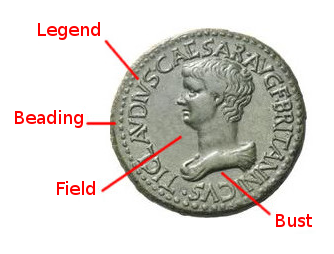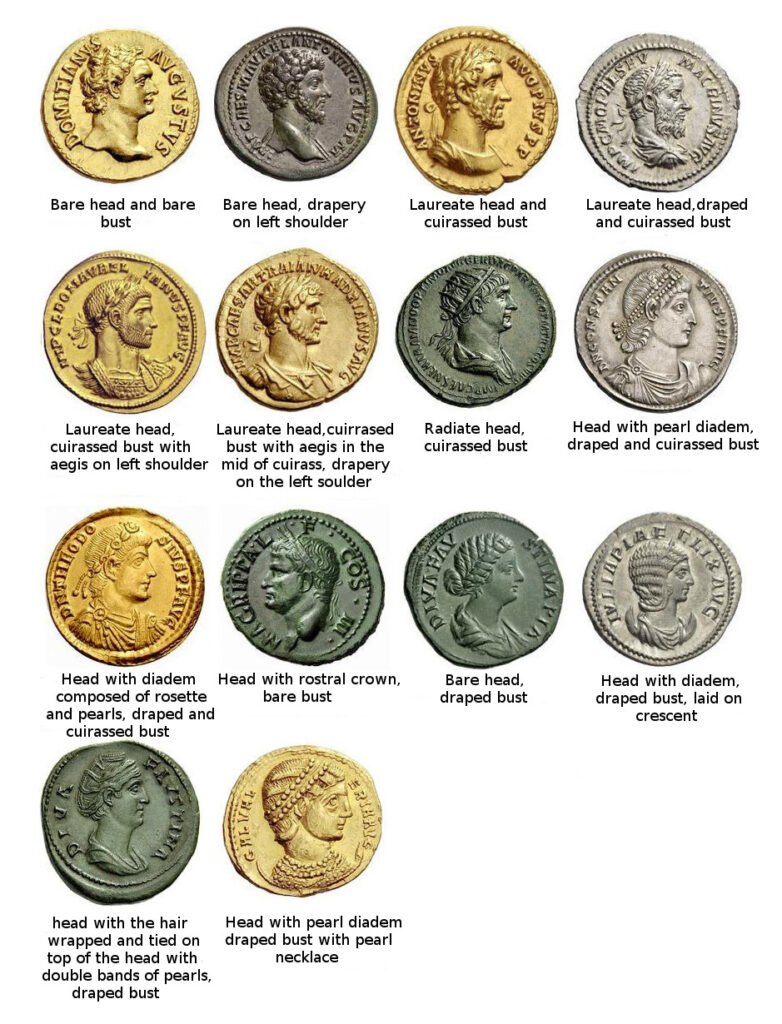How To Identify Roman Old Coins Today?
Introduction to Identify Roman Old Coins
Identify Roman old coins requires a significant aspect of ancient Roman culture, providing insight into the economic, political, and social life of the time. The minting of Roman coins began around the late fourth century BC and continued until the fall of the Western Roman Empire in the late fifth century AD.
These coins were primarily minted in gold, silver, bronze, and copper, each material reflecting the coin’s denomination and intended use.
Among the varied types of Roman coins, the denarius, sestertius, and aureus stand out. The denarius, a silver coin, was a staple of Roman currency and widely used in everyday transactions. The sestertius, typically made of bronze, was another common coin, often used for larger purchases or savings. The aureus, a gold coin, represented substantial wealth and was generally reserved for significant transactions and savings by the elite.

The creation of these coins was not merely for economic transactions; they also played a crucial role in disseminating information and propaganda. Emperors would often have their likenesses and achievements depicted on coins, helping to convey their power and legitimacy across the vast Roman Empire. Additionally, Roman coins featured various deities, symbols, and inscriptions that reflected contemporary values and significant events.
Understanding the historical context and the various types of Roman coins is essential for their accurate identification. These coins serve as valuable historical artifacts, offering a glimpse into the intricate workings of ancient Roman society. The accurate identification of Roman coins allows historians and collectors to better understand the era’s economic systems, political structures, and cultural practices. As we delve deeper into the process of identifying these coins, this foundational knowledge will prove indispensable.
Understanding the Design and Symbols
Roman coins are rich with intricate designs and symbols that can offer substantial insights into the ancient world. One of the most common features on Roman coins is the portrait, typically of an emperor, which can be a crucial identifier.
The emperor’s likeness is usually accompanied by their name, often abbreviated, and their titles, such as “IMP” for Imperator or “AVG” for Augustus. Pay close attention to the facial features, hair style, and attire, as these can help pinpoint the specific ruler and, consequently, the time period of the coin.
Besides emperors, Roman coins frequently depict gods and goddesses, symbolizing divine favor and th9e religious beliefs of the time.
For instance, Jupiter is often shown with a thunderbolt, Mars with a spear, and Venus with a mirror. Identifying these deities can provide context about the cultural and religious significance of the coin.

Another significant category of imagery includes scenes of military victories. These might depict soldiers, battles, or the personification of Victory herself, often holding a wreath or palm branch. Such images not only celebrate triumphs but also serve as propaganda to reinforce the power and success of the ruling regime.
Mythological scenes are also prevalent, illustrating stories from Roman mythology that reflect the values and beliefs of the society. These can range from heroic deeds of legendary figures to interactions between gods and mortals. Recognizing these mythological narratives can enhance your understanding of the coin’s symbolic meaning.
Architectural representations, such as temples, arches, and other significant buildings, are yet another common motif. These images can indicate the coin’s place of origin or commemorate important construction projects.
Inscriptions often accompany these designs, providing additional context. Latin phrases and abbreviations, such as “SC” (Senatus Consulto) indicating Senate approval, or “PP” (Pater Patriae) meaning Father of the Fatherland, can help date and authenticate the coin.
By thoroughly examining these designs and symbols, you can gain a deeper understanding of Roman coins, their origin, and their historical context. Each element, from the portrait to the inscriptions, contributes valuable information that aids in identifying and appreciating these ancient artifacts.
Examining Coin Material and Minting Techniques
Understanding the materials and minting techniques used in Roman coinage is crucial for identifying and authenticating these ancient artifacts. Roman coins were primarily made from three types of metals: gold, silver, and bronze. Each of these metals not only influences the coin’s value but also provides significant clues to its authenticity.
The Romans employed two primary minting techniques: striking and casting. Striking involved placing a blank piece of metal, called a flan, between two engraved dies and then hitting the upper die with a hammer to imprint the design onto the flan. This technique often results in sharp, detailed images and a consistent weight and thickness across coins. Signs of striking, such as visible die lines, can be an indicator of the coin’s authenticity.
Casting, although less common, involved pouring molten metal into a mold. This method was primarily used for producing bronze coins and often resulted in a smoother and more uniform appearance. However, cast coins may exhibit small air bubbles or casting seams, which can be useful in identifying genuine coins.
Recognizing signs of wear and corrosion is also vital in determining authenticity. Genuine ancient coins will often show uneven wear, indicating their circulation and use over time. Patina, a layer of corrosion that forms on the surface of the metal, can also be a telltale sign of age.
Using Modern Tools and Resources for Identify Roman Old Coins
In the contemporary era, identifying Roman coins has been significantly simplified through the availability of various modern tools and resources. Collectors and historians can now leverage a range of reference books that provide comprehensive details about Roman coinage. These books often include high-resolution images, detailed descriptions, and historical contexts, which are crucial for accurate identification. Popular reference works such as “Roman Imperial Coinage” and “The Roman Coin Database” are invaluable resources that provide extensive catalogs of Roman coins.
Beyond traditional books, online databases have emerged as indispensable assets for numismatists. Websites like the “Online Coins of the Roman Empire” (OCRE) and “CoinArchives” offer searchable databases that allow users to compare their finds with thousands of documented Roman coins. These platforms often include user-generated content, where collectors and experts share insights and images, further enriching the identification process.
Specialized software has also made significant strides in aiding the identification of Roman coins. Programs such as “Coinoscope” and “Coin Identifier” utilize advanced image recognition technology to analyze photographs of coins, providing users with potential matches and detailed information. This technology can be particularly useful for newcomers who may not yet be familiar with the nuances of Roman coinage. By simply uploading a photo, users can receive instant feedback and guidance on their coin’s origins and characteristics.
Consulting guidance
Consulting with experts remains a critical component of the identification process. Engaging with professional numismatists and participating in numismatic communities, both online and offline, can provide invaluable insights and verification. Forums, social media groups, and local coin clubs offer platforms for sharing knowledge and experiences, fostering a collaborative environment for enthusiasts at all levels.
Lastly, documenting and preserving Roman coins is essential for maintaining their historical value. Proper cataloging, using detailed records of each coin’s specifications and provenance, helps in tracking and authenticating collections. Preservation techniques, such as storing coins in protective holders and maintaining optimal environmental conditions, ensure that these ancient artifacts remain in good condition for future study and appreciation.
Leave a Reply